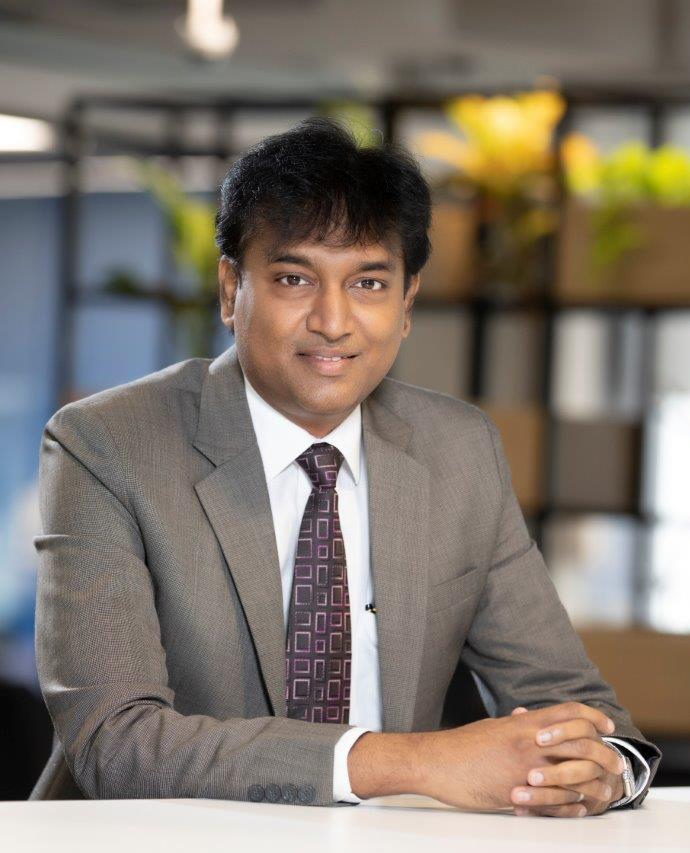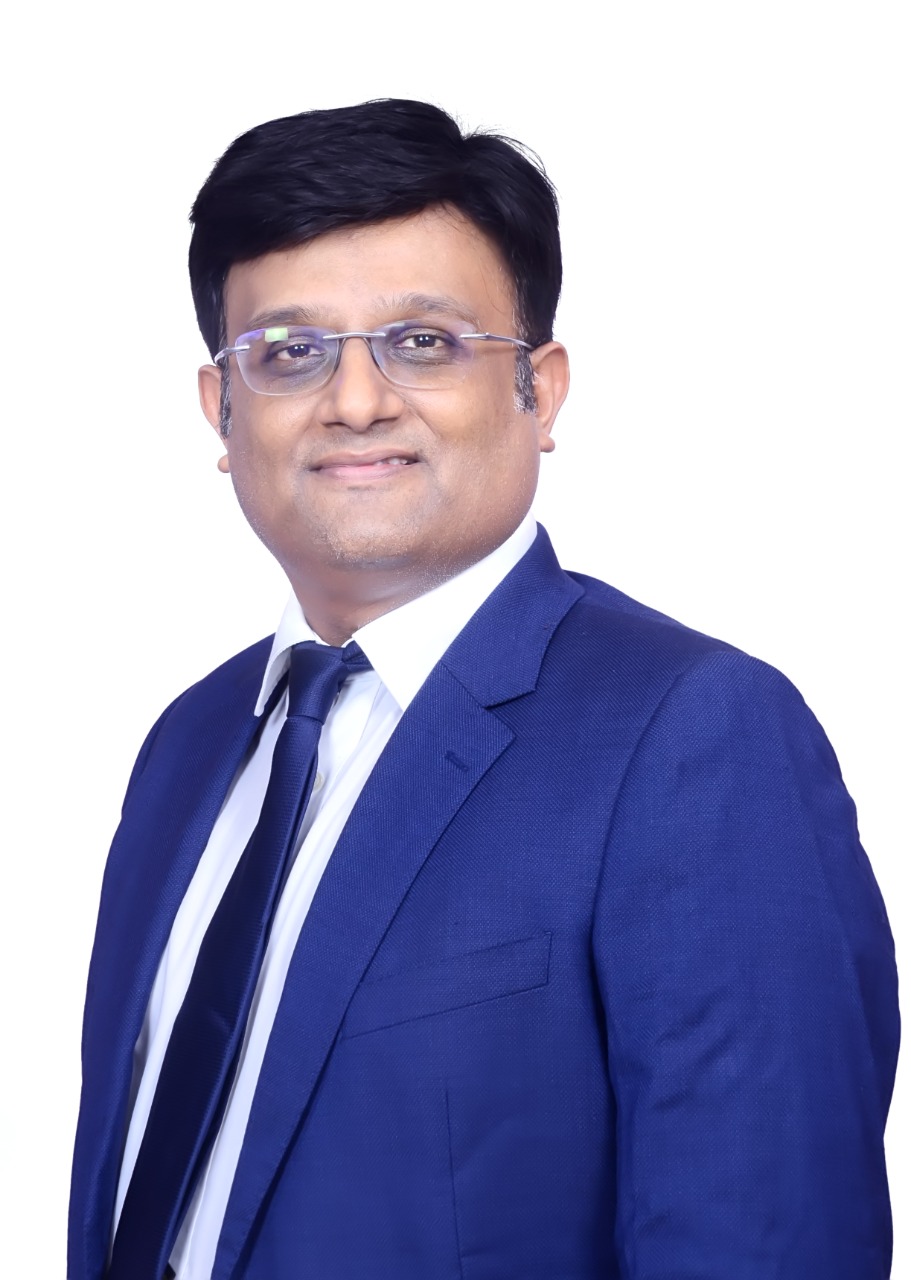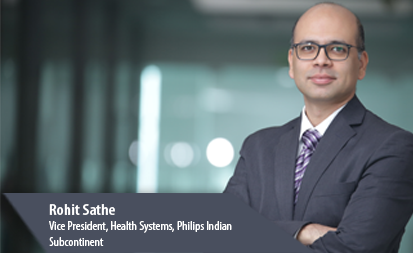Integrated cardiology solutions can be panacea for India’s cardiovascular disease burden
Nitin Stephen Abel Image Guided Therapy Philips Indian Subcontinent India suffers from a huge cardiovascular disease (CVDs) burden with one in four deaths (2.5 million/ year) due to CVDs including ischemic heart diseases. The Global Burden of Disease

Nitin Stephen Abel
Image Guided Therapy
Philips Indian Subcontinent
India suffers from a huge cardiovascular disease (CVDs) burden with one in four deaths (2.5 million/ year) due to CVDs including ischemic heart diseases. The Global Burden of Disease study states that the age-standardised CVD death rate is 272 per 100,000 population in India, much higher than that of the global average of 235. India had approximately 55 million CVD cases in 2016 and just before the pandemic, there were only six lakh angioplasties in the country each year. Despite such a huge disease burden, there are around only ~2000 active Cath Labs available in about ~140 cities in the country.
To tackle such a massive disease burden, there is an opportunity for health-tech companies to provide innovative, integrated cardiology solutions at each point in a patient’s journey—and connect them across the care pathway to improve care and quality of life for patients. These innovations have the potential to help provide enhanced clinical insights, strengthen clinical confidence, drive efficiency in critical care and improve cardiac care experiences from diagnosis and treatment to home care, delivering better experiences for clinicians, patients, and staff.
A powerful ecosystem for cardiovascular care comprises of software-defined systems supported by Artificial Intelligence (AI) and connects care along the entire patient journey (from emergency care, diagnosis, treatment, post-acute to at home care) with uniquely integrated imaging, devices, software, informatics, and services. This ecosystem can deliver data-driven insights to provide the right care at the right time to help better manage even the most complex cardiology cases. Smart integrated end-to-end technology streamlines communication between devices and systems to help identify and address clinical as well as operational improvements, strengthen clinical confidence, build workflow efficiency, optimize resources, and help lower the cost of care.
There is scope for transformation of cardiac care delivery in India into a connected future by integrating imaging, devices, software, informatics, and services including:
Minimally invasive treatment – Minimally invasive/ image guided therapy (IGT) procedures have seen a major uptake in the recent times. These procedures are completely safe (less-invasive/short-recovery) and provide better clinical outcomes in most selected patient groups. A large part of this success can be attributed to the way digitally sophisticated products such as cath labs empower experienced physicians with clear images. Further, AI enabled smart applications on these products helps the operator tackle several disease challenges. A cath-lab is a good example where a physician can tackle multiple cardiac issues under fluoroscopy, which, traditionally would have been addressed by complex surgeries.
With the rise of IGT procedures in India, cardiac interventions such as angioplasties have become routine. Over six hundred and fifty thousand angioplasties are performed annually in India and are growing at a high single digit rate each year. Futuristic cath-labs, also referred to as interventional suites, combine multiple advanced technologies to yield varied solutions than the traditional outputs. This approach allows catheter-based interventional therapies to expand their capabilities and reach broader patient groups with higher success rates. It also enables multiple specialty doctors to make the best decisions for their patients while protecting themselves and their patients from avoidable radiation exposure during X-Ray procedures.
With 1000+ active cath labs in India and growing strongly, we continue to demonstrate our commitment to address the burden of cardiovascular disease in the country. However, we clearly acknowledge a huge unmet clinical need owing to the high CVD disease burden and have aggressive plans to expand our cath labs in the next several years to reach to the remotest of locations, helping the medical community tackle more complex patient procedures.
Precision diagnosis for cardiology – Clinically smart diagnostic solutions, streamlined workflows and actionable insights for data-driven cardiac care identify clear pathways for the most complex patient journeys. Vendor-neutral advanced visualisation solutions for multi-modality imaging and information management, AI-powered CT and MR cardiac imaging features, and advanced echocardiography solutions including 3D TEE (Trans Esophageal Echocardiography) are being used to enhance diagnostic confidence leading to operational effectiveness and improved patient outcomes. The fusion of ultrasound and cath lab images deliver advanced capabilities for better imaging and subsequently improved procedural outcomes. AI based quantification tools on ultrasound systems provide fast, accurate and reproducible results that can aid the consultant in diagnosing complex cardiac pathologies.
Cardiac monitoring and diagnostics –Cardiac care solutions include real-time patient monitoring, telehealth and cardiac ambulatory diagnostics and monitoring solutions to provide confident care across post-acute settings for chronic disease and readmission management. The Emergency and therapeutic solutions such as Cardiac defibrillators with telemedicine facility, CPR training facility and advanced vital sign monitoring are used in hospitals and Automated External Defibrillator (AED) are mainly used outside hospital settings to handle cardiac emergencies. Besides this, 12 channel cardiographs, Holter recording for long term monitoring and stress system to understand patient’s ability to withstand various stress conditions can support cardiologist to conclude any cardiac rhythm related abnormalities. These help to streamline workflow, improve productivity, and raise the quality of cardiac care.
In conclusion, we think that there is a need for health-tech players to focus on requirements of our customers first, keeping the patients at the center of everything we do, in line with the objective to achieve to have better clinical outcomes, improved patient experience, improved staff experience and lowered cost of care. Several aligned technologies like Intravascular Ultrasound, Fractional Flow Reserve, Optical Coherence Tomography, Electro Physiology 2/3-Dimensional mapping etc. can aid better and safer clinical procedures. Leading health-tech companies are working to deliver smart solutions using futuristic technologies like augmented reality in healthcare, fiber-optics technology for 3D-colored imaging, no X-ray procedures, tele-monitoring with precision diagnosis etc. to enhance patient experience and clinical outcomes.






